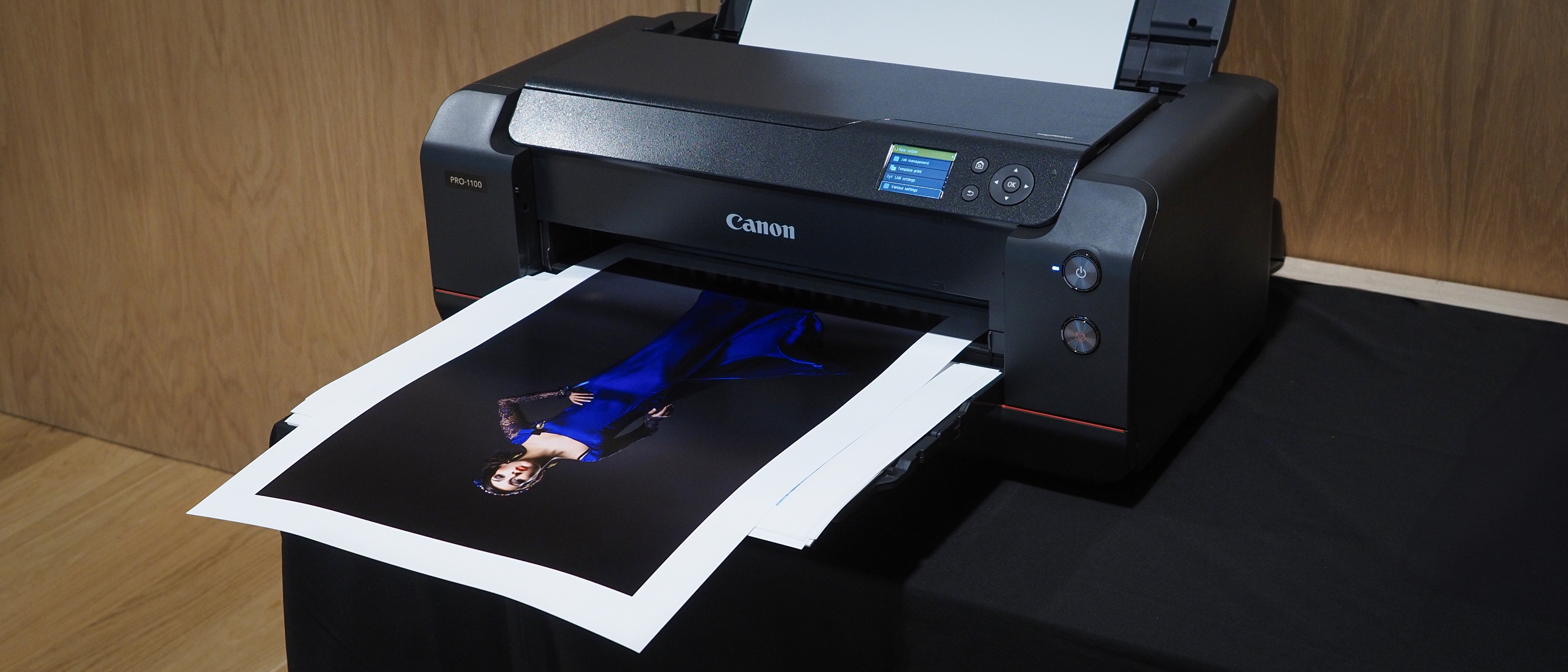Early Verdict
Coming from the Pro-1000, I was hopeful but skeptical about what its successor could do. However, having held the prints in my hands, I can safely say that the Canon ImagePrograf Pro-1100 is the tool that anyone who prints professionally needs to have. Its sheer versatility means it can handle just about any job you throw at it, offering borderless printing up to A2 and the incredible ability to produce panoramas and banners up to 3.2767m / 10.75ft in width. The Pro-1100 produces the best blacks I've seen from a pro printer in this category, and the color gradation in darker areas simply embarrasses the competition.
Pros
- +
Incredible black rendering
- +
Borderless printing up to A2
- +
Up to 10.75ft panos / banners
- +
Scratch-resistant wax-based ink
Cons
- -
Same speed as the Pro-1000
- -
Inks are expensive
Why you can trust Digital Camera World
There are plenty of amazing things about the Canon ImagePrograf Pro-1100, the latest flagship model in the company's professional printing range. But the most amazing thing to me is that the printer it replaces – the ImagePrograf Pro-1000 – is now almost a decade old!
It was a fantastic flagship for 2015, and is still a premium performer today, but printing technology has come a long way in that time. The Canon ImagePrograf Pro-1100 takes everything that was great about the Pro-1000, adds some of my favorite things about the ImagePrograf Pro-300, and the result is a printer that truly deserves a place in any professional's workflow.
While I initially wondered just how much better (or even just different) it could be from the Pro-1000, having spent some time with the printer I can honestly say that the Pro-1100 sets a new standard for what you should expect of your prints.
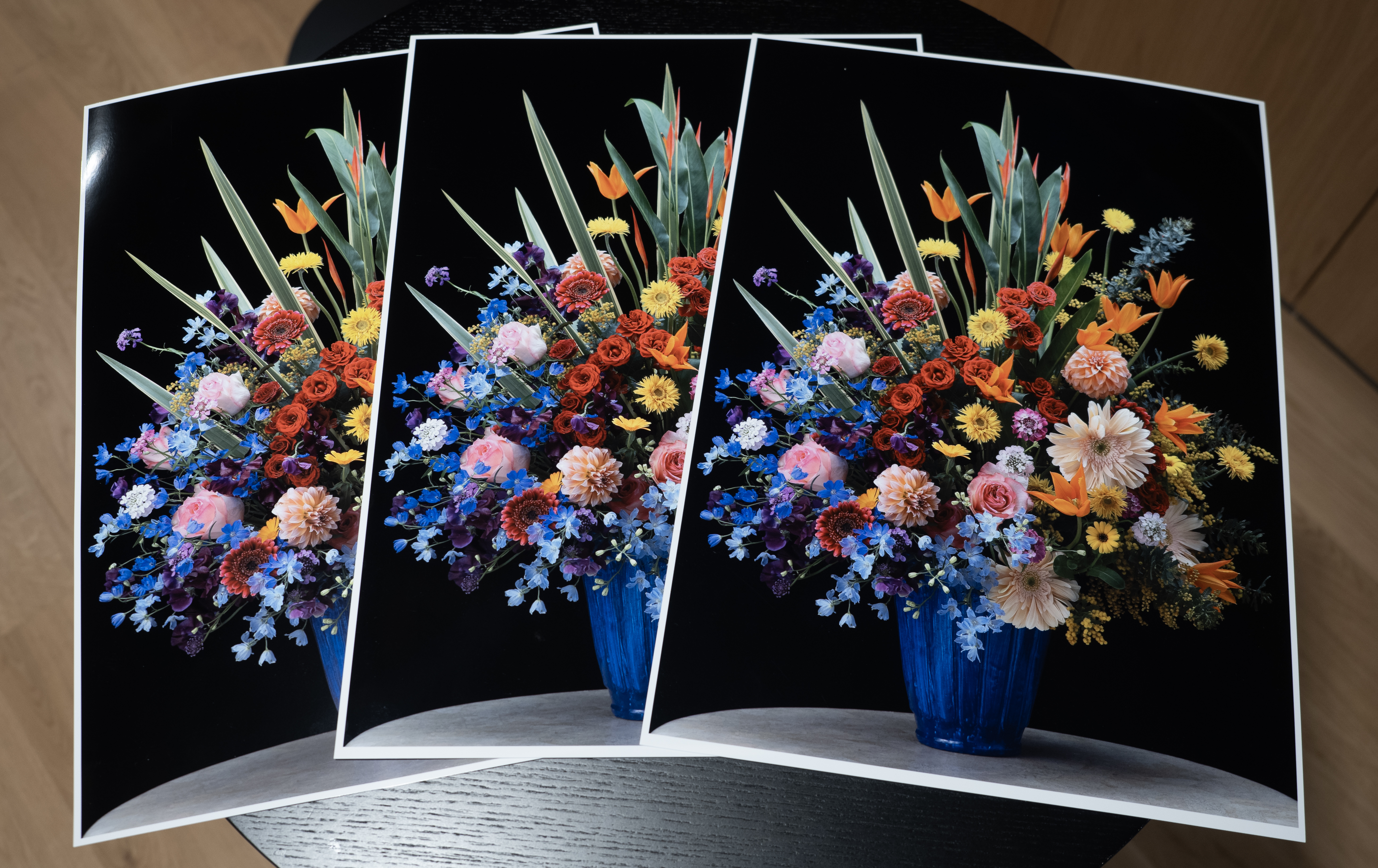
Canon ImagePrograf Pro-1100: Key features
Where the Pixma series is designed for home use, namely for amateur and advanced photographers, the ImagePrograf range is intended for professional output up to A2 / 17 inches.
The Canon ImagePrograf Pro-1100 is designed for high yield output with the widest possible color range. It features a large 80ml ink tank comprising an 11-ink system of Lucia Pro II pigment-based ink for superior contrast, incredible monochrome printing and improved longevity and preservation of your prints.
Significantly, when it comes to mono prints, the Pro-1000 also uses the matte black ink formula seen in the Pro-300 – and this lays down a level of depth in the blacks that truly blew me away when I first started using the 300.

It also employs the same PF-10 print head as the P-1000 with its MBk (matte black) / PBk (photo black) nozzle that automatically selects the appropriate black ink for matte or glossy stock. On top of that, a new Black & White print mode has been added to the driver that only uses the gray and black inks (Gy, PGy, PBk and MBk).
The upgrade to Lucia Pro II inks brings a host of improvements to things like dark color reproduction and black density, but arguably the biggest improvement is to overall print durability.
Not only has wax been added to the ink, which produces improved abrasion resistance on glossy stock, but a new pigmentation formula delivers prints with lightfastness of up to 200 years (up from 60 years with the previous formula) on glossy paper. These factors will make a huge difference to anyone who handles, frames and displays their prints.
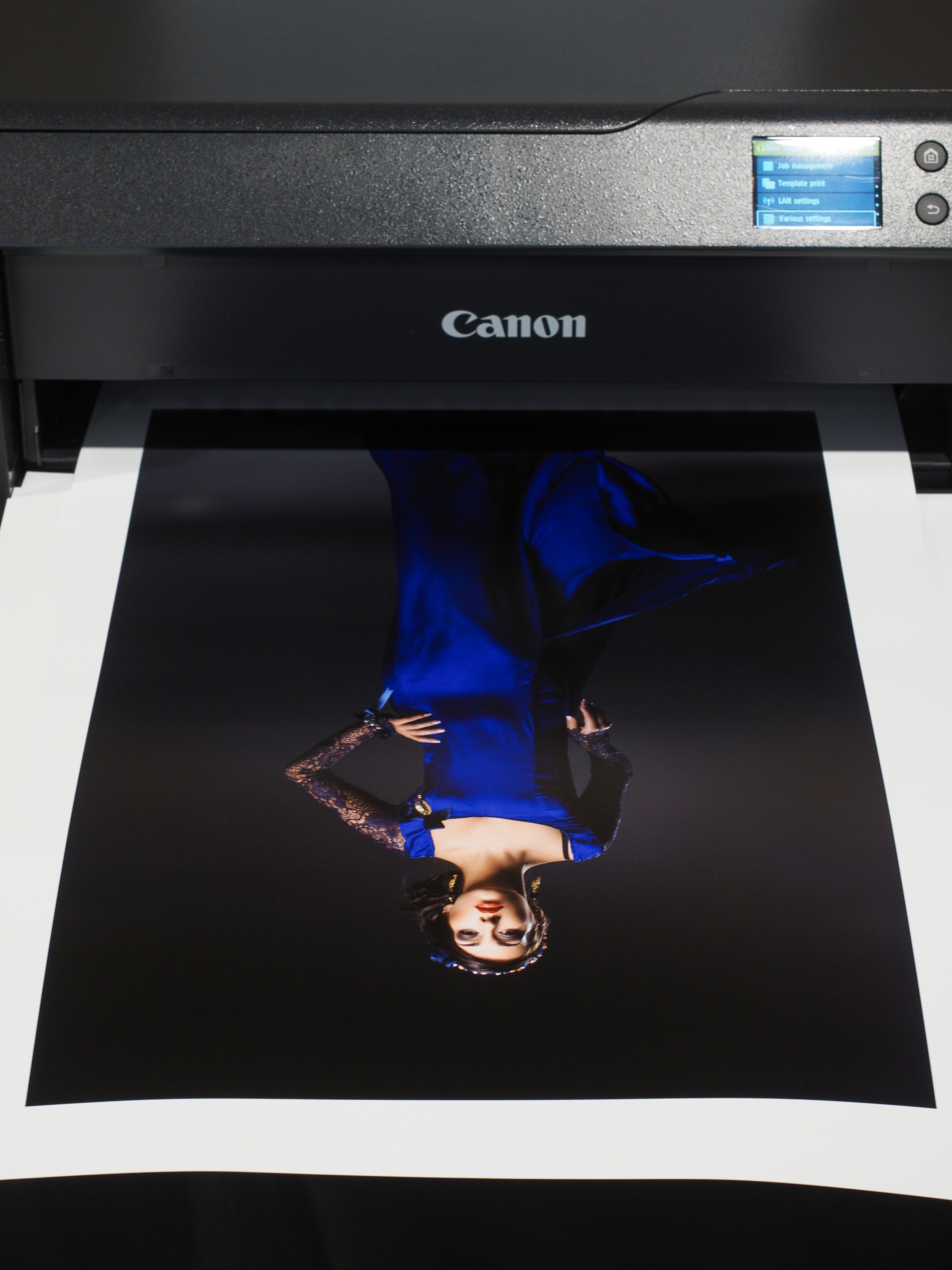
There's increased control over the Chroma Optimizer (transparent ink), giving you additional options of Images only and Off (on top of Auto and Overall) if you want to retain the edge texture of the stock or you want to turn the clear coating finish off completely (if you're planning to laminate the print, for instance).
Data depth retrieval has also been improved, providing superior end-to-end performance for those using a pure Canon ecosystem – rewarding users who capture their images on an EOS camera, by retrieving the RAW information to achieve accurate color reproduction, gradation and sharpess.
Previously, linkage was only possible when using DPRAW and DPRAW-print formats when started in Canon's Digital Photo Professional (DPP) software. Now input-output linkage is also possible from RAW files using DPP and Professional Print & Layout, meaning the image detail you captured on your camera can be the image detail you realize in your prints.
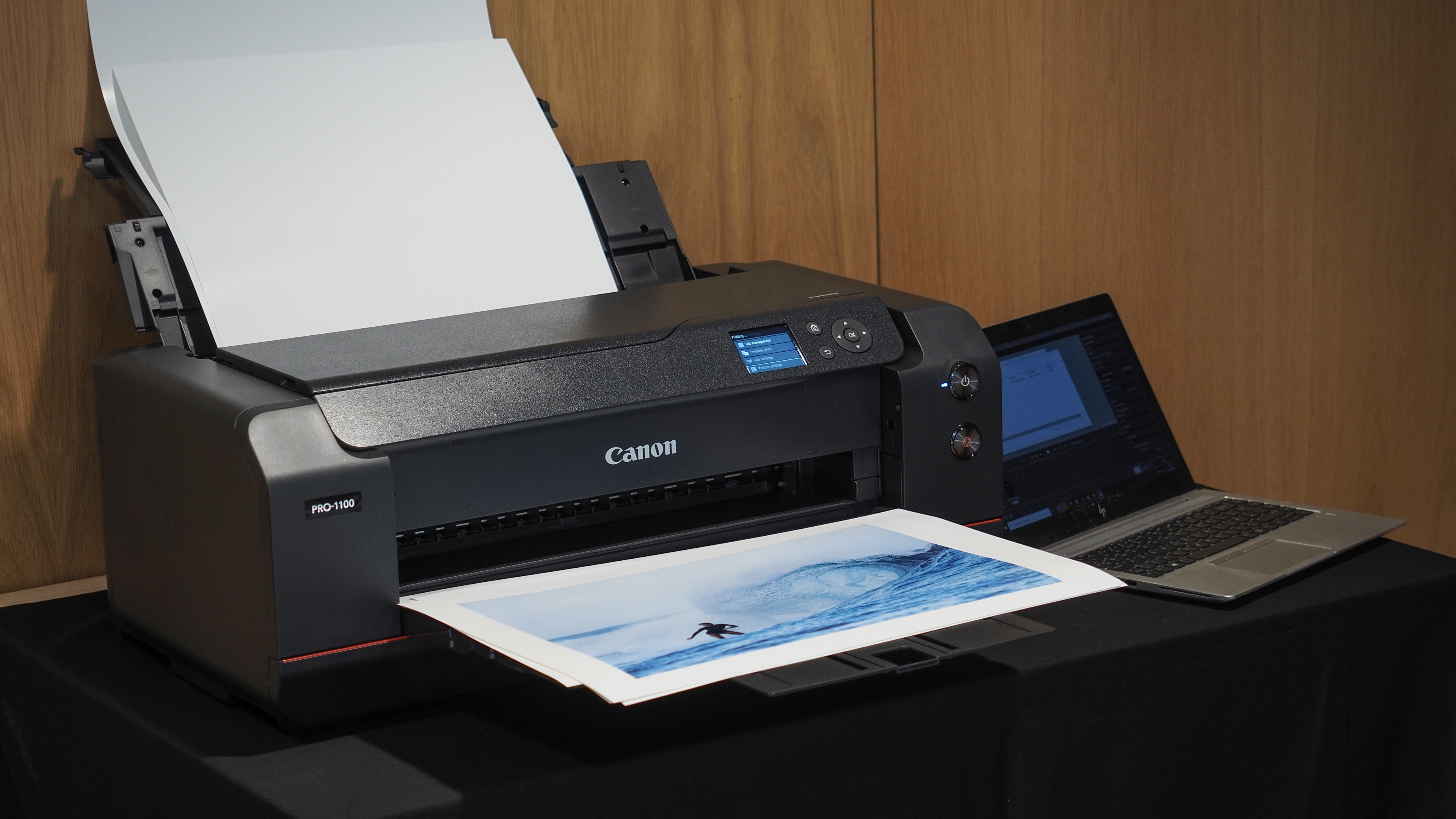
Canon ImagePrograf Pro-1100: Print sizes
Compared to the Pro-1000, the Pro-1100 adds 7 more paper sizes to its regular printing along with 4 additional sizes for borderless printing. The full list of supported paper is below, with the new sizes indicated in italic.
Perhaps more exciting for those who print panoramas and banners, however, is the increased long-form print when using roll paper. The Pro-1000 was capable (after a firmware upgrade) of printing up to 1.2m / 3.94ft, but the Pro-1100 offers a maximum user-defined paper size of 3.2767m / 10.75ft.
Regular printing sizes
A5, A4, A3, A3+, A2
B5, B4, B3
L Edition (3.5x5), 2 L Edition (5x7), KG (4x6)
Letter (8.5x11), Legal (8.5x14), Ledger (11x17), 17x22
6-Cut (8x10), 4-Cut (10x12), Half-Cut (14x17)
Postcard and return postcard
7x10
9x13
11x14
13x19
16x20
17x25
12x12
A6, Half Letter, 5x8, HD
Borderless printing sizes
A4, A3, A3+, A2
Letter (8.5x11), Legal (8.5x14), Ledger (11x17), 17x22
6-Cut (8x10), 4-Cut (10x12), Half-Cut (14x17)
Postcard
B4
Legal (8.5x14)
13x19
17x25
A6, Ledger, 5x8, HD, 11x14, 16x20
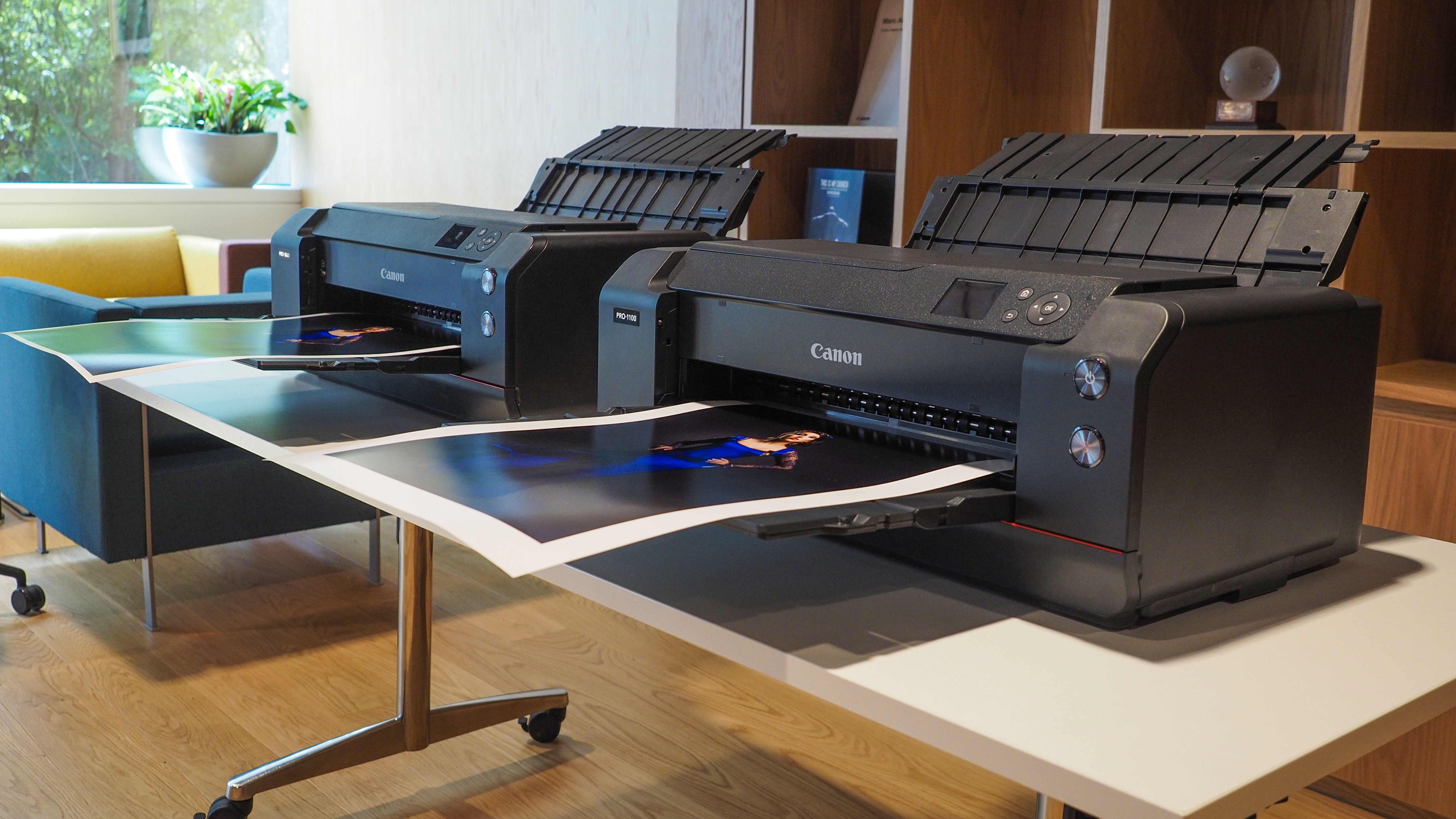
Canon ImagePrograf Pro-1100: Performance
While the full suite of tests and comparative printing will have to wait for the full review, I was able to run off a series of prints on the Pro-1100 side-by-side with the Pro-1000 to see the differences and improvements in real time.
I was also able to compare the print quality not just between these two Canon flagships, but also against the rival Epson SureColor SC-P900 A2 printer. In all cases, the superiority of the Pro-1000 was truly eye-opening.
While there is literally zero difference in print times between the two Canon printers, the addition of the new matte black ink (as used by the Pro-300) make a near night-and-day difference to blacks in general, but especially when it comes to monochrome prints.
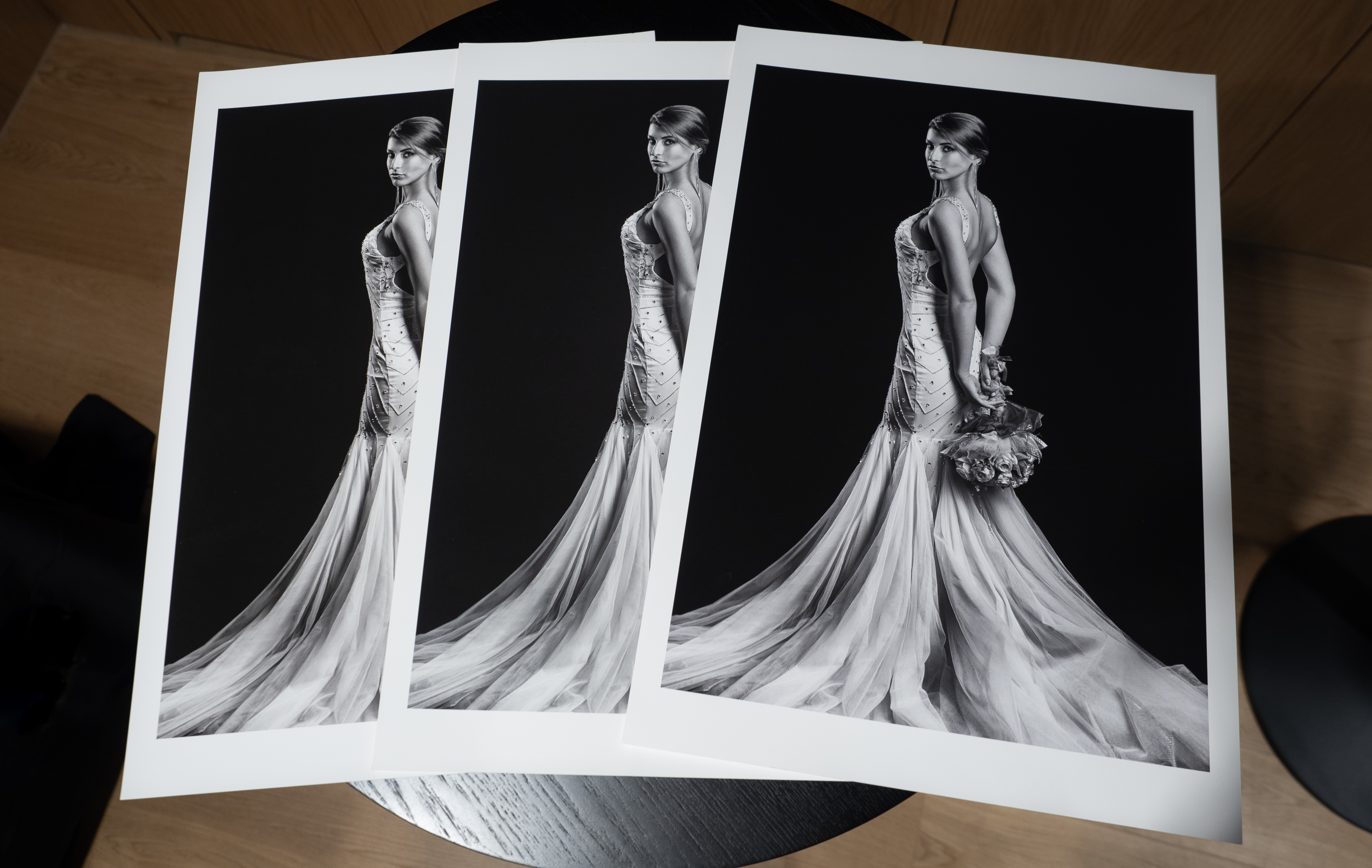
I print a lot of black-and-white images, and when I first started using the Pro-300 I just couldn't get over how much better it made the photos look – and that's only amplified by the output of the Pro-1100. While mono prints on the Pro-1000 certainly don't look bad, by comparison they certainly look more "dusty grey" than the deep, dark, detailed blacks laid down by the new flagship.
The black density is increased both by increasing the surface coverage, and by the low-reflectance forumla of the pigments. The result is some of the crispest contrast I've seen, truly exhibition and fine art quality.
The improvements don't just come in the greyscales, though. A new color-matching table drastically improves color reproduction in dark blue areas of the color gamut. This was put to the test by two images in particular – a near low-key studio shot of a model wearing a blue dress, and a nighttime cityscape with the dying light fading the sky into dark indigo.
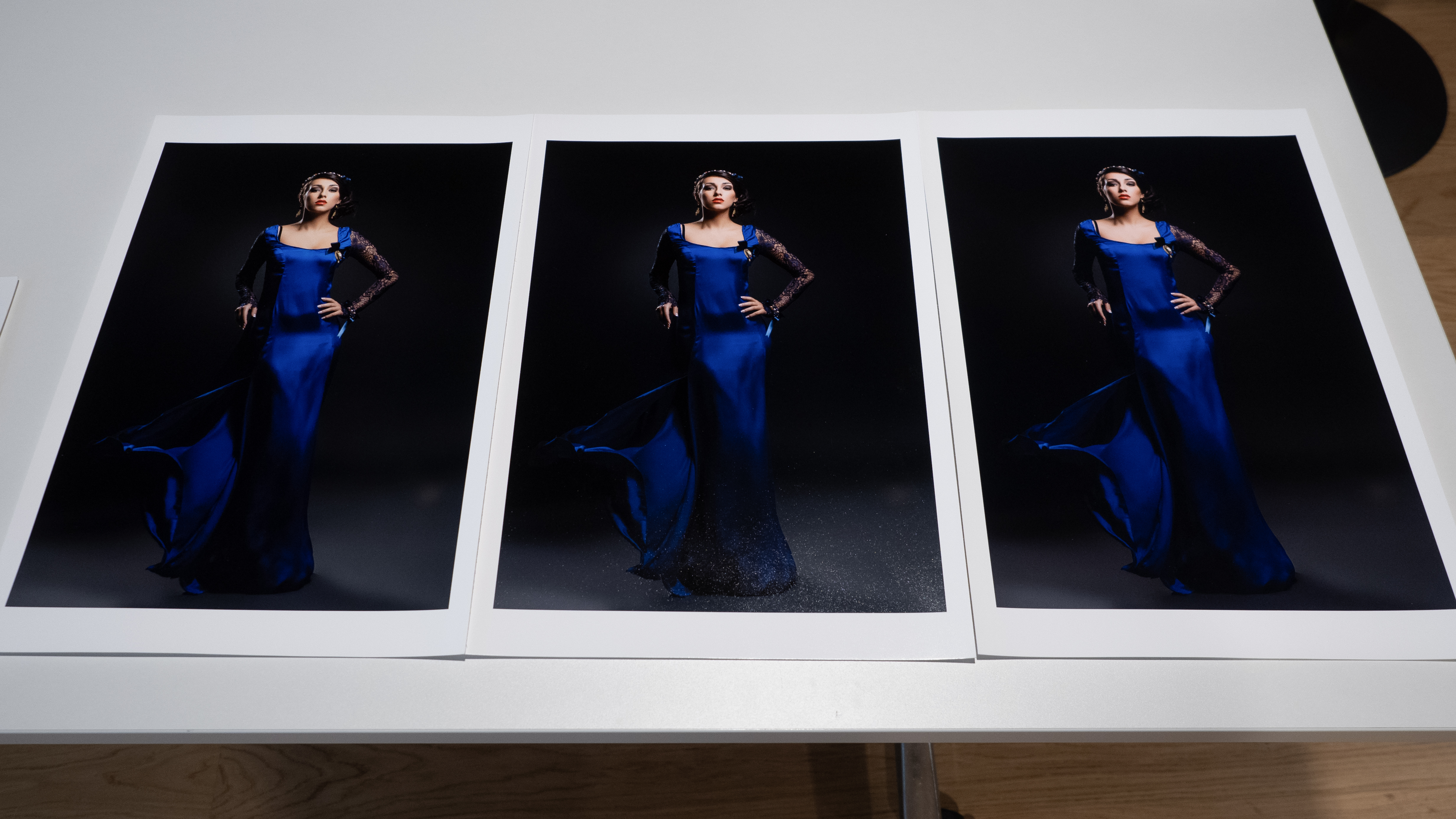
Here I was truly amazed at the difference in the image quality produced by the Pro-1100 side-by-side with the Epson. While the P900 is a capable printer, I was shocked at how poorly it rendered colors in these dark blue areas. On the model's dress, the Epson was laying down large swathes of purple inks instead of blues in these darker parts of the image. The Pro-1000, meanwhile, was printing far more delicate and accurate gradation of the blues.
The same was true with the cityscape shot. Where the Pro-1000 was still rendering subtle detail as the blues faded into blacks, the P900 was churning out muddied tones that almost look like the artefacting you produce when you crank the exposure sliders up on a dark image in Photoshop.
After seeing these differences, I was able to see the blues and dark tones betray the Epson in other images. Again, you wouldn't dream of saying that the P900 is a bad printer – but when you start comparing prints between them, the Pro-1100 is lightyears ahead in terms of the depth of tonality it can reproduce.
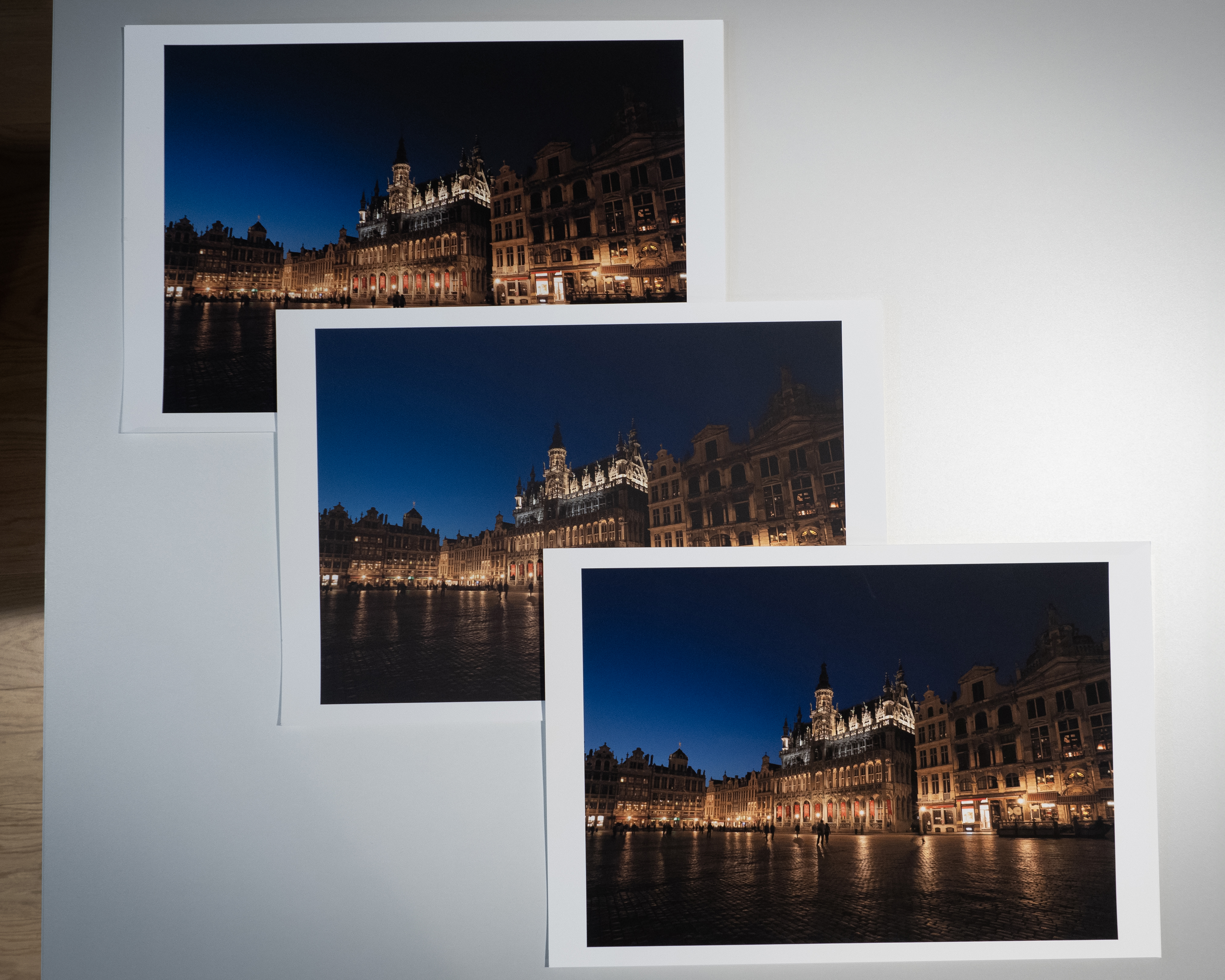
Canon also showed me some printed swatches to show the scratch-resistance of the new wax-infused Lucia Pro II inks, which was another eye-opener for anyone who has errantly nicked or scuffed a print while handling, rolling or framing it.
Where the Pro-1000 swatches showed visble scratching in around 80% of the samples (and it should be noted that the P900 fared much better, with far fewer swatches being scratched), the Pro-1100 prints were unscatched; while the pressure marks of the scratching implement could be seen, the wax prevented the surface of the inks from being broken.
I'm really looking forward to printing out more samples with this printer to see how it handles other brightness and color dynamics, but right now – as someone who has used the Pro-1000 extensively – I'm genuinely blown away by what the new flagship can do.
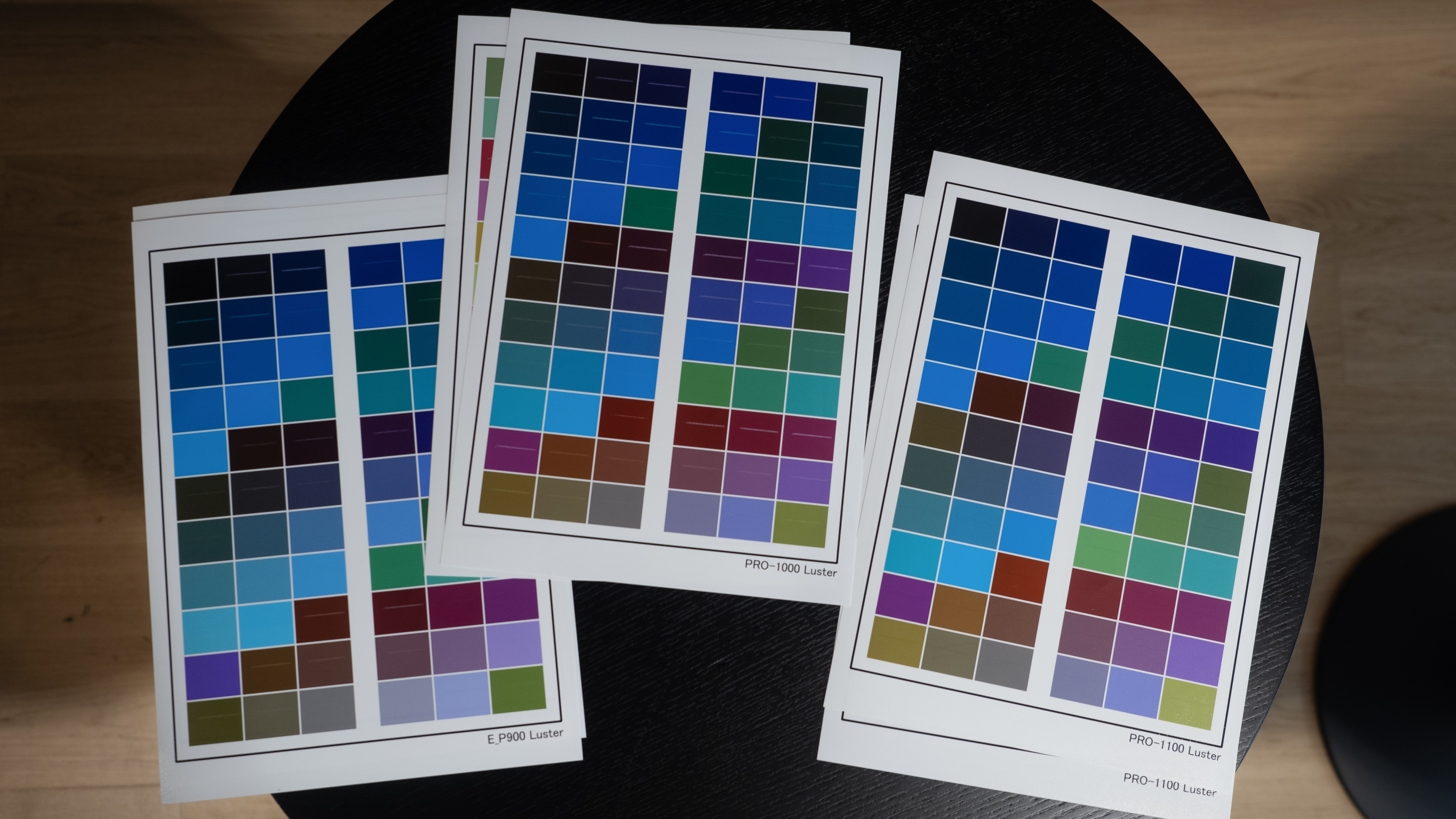

Canon ImagePrograf Pro-1100: Early verdict
Coming from the Pro-1000, I was hopeful but skeptical about what its successor could do. However, having held the prints in my hands, I can safely say that the Canon ImagePrograf Pro-1100 is the tool that anyone who prints professionally needs to have.
The sheer versatility of this printer means it can handle just about any job you throw at it, offering borderless printing up to A2 and the incredible ability to produce panoramas and banners up to 3.2767m / 10.75ft in width.
Usually when you hear about "better blacks" and "improved color gradation" you know that someone is probably desperate to fill out a sales sheet and reaching for anything they can. But there's no doubt that the Pro-1100 produces the best blacks I've seen from a pro printer in this category, and the color gradation in darker areas simply embarrasses the competition.
The longevity and durability of the prints shouldn't be underestimated, either, with a promised 200 years of lightfastness and the new wax-infused inks genuinely adding meaningful scratch-resistance.
I've almost shed tears after spending ages carefully printing an A3 image for a client on expensive paper, only to chip a chunk out of it while rolling it up and having to do the whole thing over again (at silly o'clock in the morning, no less). I wish I'd had these clever wax inks back then!
If you already own the Pro-1000 – particularly if you don't print a lot of mono – the improvements probably don't warrant the upgrade in and of themselves. With a lot of the same mechanics inside, you don't get any improvement in print speed and yes – the inks are still expensive.
Still, if you've been using the old model since 2015 or you're looking to upgrade or complement a more junior professional printer, the Imageprograf Pro-1100 should be the upward move you make. Take one look at its prints and you're going to fall in love with what it can do.
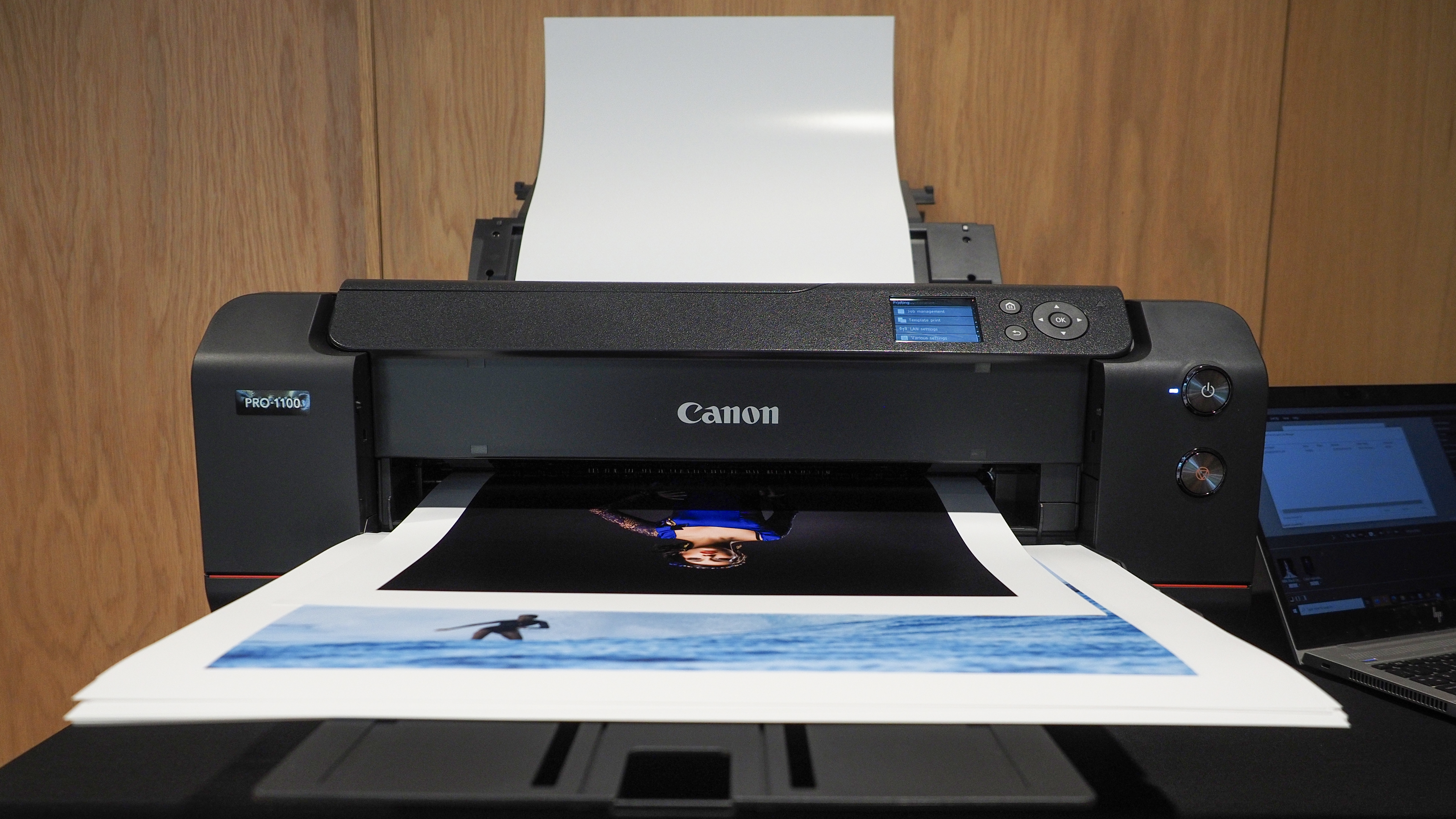
You might also be interested in the best photo printers, the best large format printers and the best photo paper for inkjet printers.

James has 22 years experience as a journalist, serving as editor of Digital Camera World for 6 of them. He started working in the photography industry in 2014, product testing and shooting ad campaigns for Olympus, as well as clients like Aston Martin Racing, Elinchrom and L'Oréal. An Olympus / OM System, Canon and Hasselblad shooter, he has a wealth of knowledge on cameras of all makes – and he loves instant cameras, too.
